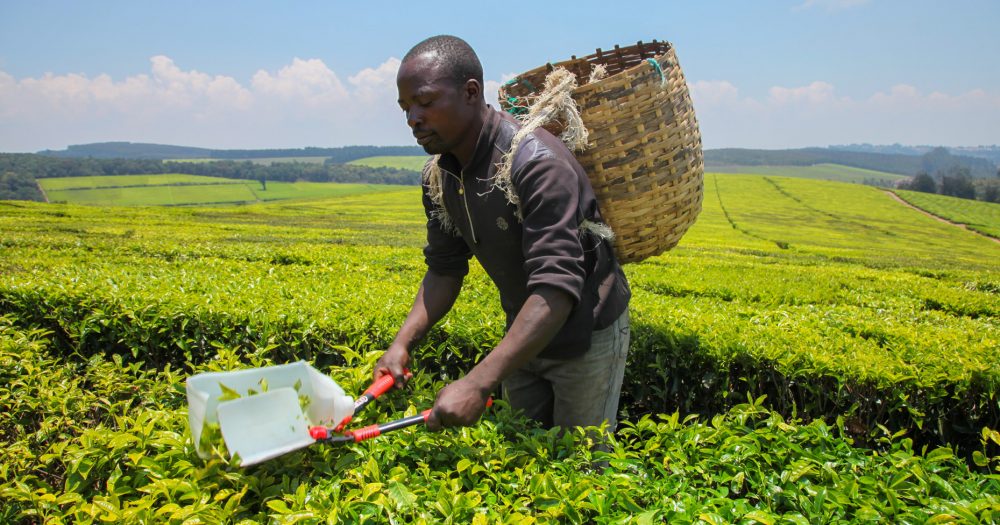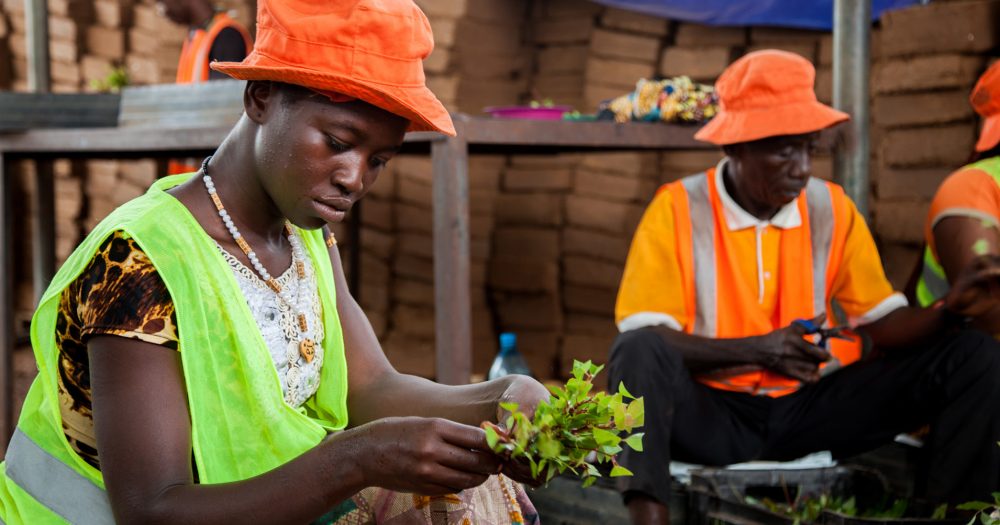Our investment
Description of the investment.
Description of the investment.
We committed XOF 16.4 billion (EUR 25 million equivalent) in local currency to Sonatel, a leader in the telecommunications market in West Africa. Our commitment is part of a EUR 87 million seven-year sustainability-linked debt facility in collaboration with IFC and Proparco. This financing is the first sustainability-linked debt facility in Francophone West Africa, designed to link loan pricing with developmental outcomes for female empowerment and capability building for the local workforce. It aims to make telecommunication services more accessible by extending mobile and fixed broadband networks, and more affordable thanks to long-term local currency financing and network optimisation.
Impact information
Applies to investments made from 2019 onwards. The tabs in this section define what we expect to achieve through the investment, assessing the potential impact of the investment against six dimensions of impact. You can find more details on our methodology of assessing impact here.
Applies to investments made from 2019 onwards. The tabs in this section define what we expect to achieve through the investment, assessing the potential impact of the investment against six dimensions of impact. You can find more details on our methodology of assessing impact here.
What?
| Impact |
|---|
This will support the company to improve its existing digital infrastructure and expand its network across the country, resulting in increased market penetration, price reductions, improved quality of service and faster adoption of 4G. |
|
|
How?
| Primary | Secondary |
|---|---|
|
Direct: Our capital will help to improve and deploy new digital infrastructure including 4G, 5G, and FTTH (Fibre To The Home), improving the quality of service in urban areas and expanding the network in rural areas. |
Economic enabler: Increased coverage and better service quality creates indirect jobs and enhances firm productivity, supporting economic growth. |
Who?
| Stakeholder | Geography | Characteristics |
|---|---|---|
| Customers |
Senegal |
• Access/market penetration: 60 per cent of the population are using the internet and data usage rates are high at c.6GB/person compared to sub-Saharan Africa average of c.2G/person. This is lower than low-middle income countries; over 100 per cent active mobile subscriptions. • Affordability: ICT prices are above the UN affordability target of 2 per cent of GNI (Gross National Income). • Coverage/Quality: 99 per cent coverage for mobile cellular and 3G and 91 per cent coverage for 4G. High data usage rates in urban areas requires increased network density and setting up the network for 5G adoption. |
| Citizens |
Senegal |
Market: Total population of 18.2 million with large youth base; 77 per cent smartphone penetration; 13.2 million mobile money users (2019 transactions represented 35 per cent of Senegal’s GDP) |
| Employees |
Senegal |
• SMEs and MSMEs (Micro, Small and Medium Enterprises) will likely experience increased productivity from becoming digitally enabled. • Employees of businesses that use the internet can increase productivity through faster speeds. This is likely to include mostly urban and large-scale businesses. |
How much?
| Scale | Depth/Duration |
|---|---|
|
Projected increase in mobile subscriber base from 12.6 mllion to 14 million by 2031 and projected increase in fibre subscriber base from 0.9 million homes and businesses to 2.6 million in 2031. Prices are predicted to reduce from a blended ARPU (Average Revenue per User) of €4.5 to €2.7 by 2031. |
An increase of 10 per cent mobile broadband penetration yields an increase in 2 per cent in GDP per capita in African geographies. African firms using the internet have 3.7 times higher labour productivity than non-users. |
Contribution/additionality
| Contribution/additionality |
|---|
|
Capital is not offered in sufficient quantity. |
Risk
Evidence RiskIt will be difficult to distinguish and confidently attribute the market impact and GDP uplift to this specific transaction. This risk needs to be tolerated. Execution RiskUnexpected Impact RiskHigher availability of capital gives Sonatel an advantage over the competition, risking a distorted market/perception that Sonatel is monopolising the market. Mitigant: Sonatel is faced with credible and experienced competitors in the market for both mobile and fixed services, as well as mobile money. Moreover, the business plan projects a reduction in Sonatel’s market share from 57 per cent to 50 per cent by 2031 so this risk is minimal. |
Environmental and social information
-
Environmental and social summary
A high-level description of the environmental and social aspects of the investment. This may include a summary of key environmental and social risks identified during environmental and social due diligence (ESDD); key elements of an environmental and social action plan (ESAP); or ways in which we plan to support the investee improve environmental and social standards, such as through their environmental and social management system (ESMS); as well as any other priority areas agreed with the investee.
-
Environmental and social risk
A risk category rating, which indicates the level of environmental and social risk associated with an investment. For an explanation of the categorisations used, see here. We consistently provide an environmental and social risk category for all investments screened from 2023 onwards.
Environmental and social summary
Working as part of a group of DFIs we agreed on a robust ESAP to strengthen Sonatel’s ESMS, including bolstering their E&S risk capacity and proactive management of labour and working conditions of contractors.
Environmental and social risk
Medium-High
Reporting and Complaints Mechanism
The Reporting and Complaints Mechanism allows anyone outside BII to report alleged breaches of the business integrity or environmental and social provisions of BII’s Policy on Responsible Investing. This includes breaches made by BII, a BII investee, or a portfolio company of a fund in which BII has invested. The Reporting and Complaints Mechanism Rules are available here. Reports and complaints can be submitted by email to reportsandcomplaints@bii.co.uk or by mail. See more details on our Reporting and Complaints Mechanism here.
For any other general enquiries contact us at enquiries@bii.co.uk
-
Key facts
- First published
:
When the investment was first published on the website database.
- September 2024
- Last updated
:
When the last quarterly update of the website database occurred.
- March 2025
- Project number
:
An identifier number shared by investments in the same project.
- D6834
- Status
:
The current status of the investment (green flag for active and red flag for exited).
- Active
- Region
:
The geographical region where the country is located. We currently invest in Africa, South Asia, South East Asia and the Caribbean. In 2023, BII’s investment mandate was extended allowing it to invest in regional funds linked to Ukraine, with the majority of activity expected to begin post-war. Investments outside these regions were made prior to 2012 under previous investment mandates.
- West Africa
- Country
:
The countries where the investment delivers impact. Where impact is delivered in multiple countries, this is indicated.
- Senegal, West Africa
- Sector
:
We prioritise those sectors that facilitate development and need our capital the most. Our priority sectors contribute towards many of the Sustainable Development Goals. They range from investing in the power infrastructure that will provide people with better access to electricity, to investing in financial institutions that direct capital to the individuals and businesses that need it the most.
- Technology and telecoms
- Sub sector
:
The sub-sector that the investment is made into; this provides a more granular level of detail than the ‘sector’ information
- Diversified Telecommunication Services
- Investment type :
- Debt
- Start date :
- May 2024
- Amount :
- $26.66m
- Currency of investment :
- EUR
- Domicile
:
The company or investment fund’s place of incorporation.
- Senegal
We provide capital in the following ways: directly – through direct equity, direct debt, guarantees and other non-intermediated financial instruments; and indirectly – principally through investment funds.
For direct investments and fund investments, this is the date BII committed capital to the investments. This is typically the date on which legal agreements are signed by all parties.
For the portfolio companies of our fund investments, this is the date (either the month or the quarter) on which the fund committed capital to the portfolio company.
For direct equity investments, this is the date at which British International Investment exited the investment.
For debt investments, this is the date at which the final debt repayment was made.
For funds, this is the date at which the fund was terminated.
For underlying fund investments, this is the date at which the fund manager exited the investment.
The total amount committed, per financial instrument, per investment, on the date BII becomes subject to a binding legal obligation to provide funding or assume a contingent liability. This information is provided in US dollars.
For direct investments, this is the amount that BII has committed to the business or project. For fund investments, this is the amount BII has committed to the fund.
The currency in which the investment was made.
- Climate finance
:
Indicates whether the investment is climate finance qualified or partially climate finance qualified and the type of climate finance (adaptation, mitigation or both). We define climate finance using the multilateral development bank (MDB) and the International Development Finance Club (IDFC) Common Principles climate finance methodology. See Common Principles for Climate Mitigation Finance Tracking and Common Principles for Climate Change Adaptation Finance Tracking. We provide the climate finance qualification and type for commitments from 2020 onwards, which is when we launched our Climate Change Strategy.
- Partially qualified
- Climate finance type
:
Mitigation: Indicates investments which, by avoiding or reducing GHG emissions or increasing GHG sequestration, contributes substantially to the stabilisation of GHG concentrations in the atmosphere – at a level which prevents dangerous anthropogenic interference with the climate system consistent with the long-term temperature goal of the Paris Agreement
Adaptation: Indicates investments aimed at preventing or reducing the risks or vulnerabilities posed by climate change and increasing climate resilience. This includes both adapted activities and enabling activities to manage and reduce physical climate risks
Dual: Indicates investments directed towards activities contributing to both climate change mitigation and climate change adaptation and meeting the respective criteria for each category
The climate finance type of the investment is determined at time of commitment.
-
- Mitigation
- 2X Gender Finance
:
Indicates whether the investment is ‘2X qualified’ using the 2X Challenge criteria. You can find out more here. It only applies to investments made from 2018 onwards, when the 2X Challenge was first launched.
- Fully qualified
- First published


